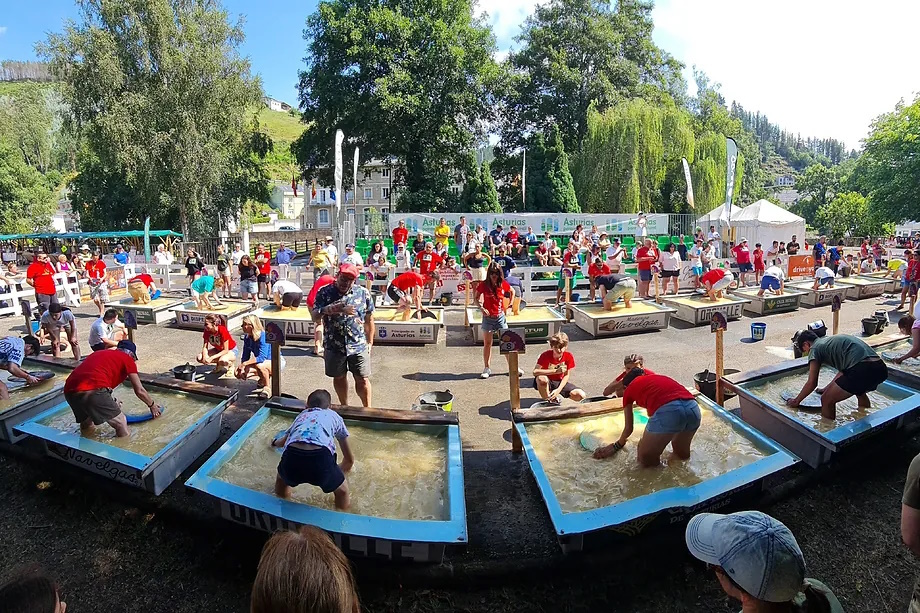The capital of gold panning, Navelgas, a village of just 300 inhabitants in the Asturian council of Tineo, is all set to host the World Championship of this unique practice from August 3 to 9, a tradition dating back to ancient times. This will be the third edition of the event, with around 600 competitors from national and international backgrounds representing 22 different countries. Quite a challenge for this exemplary village in the Principality, a title awarded to those who demonstrate "a continuous and shared effort in the recovery and maintenance of their traditions and natural resources," among other merits.
Navelgas is once again the chosen location for this third edition, organized by the Barciaecus Gold Panners Sports and Cultural Association, established in 1997 to join the global movement of this discipline adapted for recreational and touristic purposes. The Asturian town known as the Valley of Gold , due to its abundance of gold deposits, has been hosting these competitions for two decades. In addition to the world championships in 2008 and 2015, it hosted the European competition in 2005 and hosts the national gold panning championships every year.
Given this background, it is not surprising that in 2014, the competition was declared a Festival of Regional Tourist Interest of Asturias. The practice has only continued to "grow and consolidate" in recent years, as confirmed by the president of the Barciaecus association, César Castaño, who mentioned that this year they will have "37,200 gold nuggets" and 4,650 vials to contain this precious treasure.
The competition dates back to approximately 50 years ago in Finland and has since spread to other countries with a gold panning tradition, now having 20 venues worldwide and thousands of participants. These championships are governed by the rules of the World Goldpanning Association and cannot be held just anywhere. Therefore, Navelgas, an emblematic town in Western Asturias, in addition to being one of the exemplary villages recognized by the Princess of Asturias Foundation, is perfect for this event due to its history of gold mining from the Castro period of the Astures to the present day, attracting many visitors who try their luck in its rivers.
Atmosphere of the World Gold Panning Championship.
And what does the tournament consist of? Competitors participate individually or in groups in different categories, facing several qualifying rounds where they must strive to reach the final. Each round involves about 15 participants who are given a bucket of sand weighing between 10 and 20 kilograms (depending on the category), containing a number of gold nuggets that only the judges know, ranging from 5 to 20, with the same number for all participants. They also have a gold pan and a plastic tube to store the points.
Competitors stand in water-filled boxes, where they wash the sand to search for gold within a time frame usually ranging from ten to twenty minutes. Before starting, the gold pan is washed, and the vial for the gold nuggets is prepared by filling it with clear water. After finishing with the sand, the competitor must close the tube with the cap and lift the gold pan for the judges to record the competitor's time.
At the end of the round, participants who have not lifted their gold pan are eliminated, and the ranking is determined by the time taken to pan for gold, with the shortest time being the winner. Additionally, losing each nugget incurs a three-minute penalty. Once all the nuggets are collected, the participant requests their time and approaches the judges to show the nuggets they have found. After the count and timing of each participant, the results are announced.
